Walking
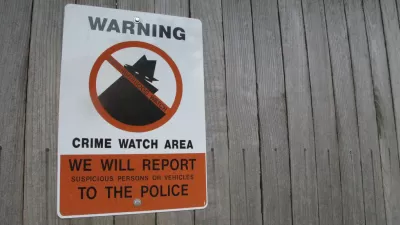
One Failure of Suburbia
Are suburbanites less fearful of crime than city-dwellers? Maybe not.
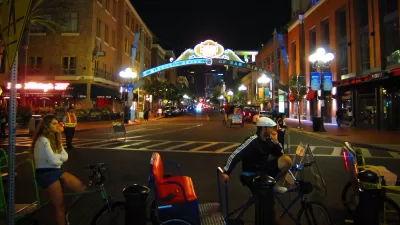
What Makes San Diego Walkers Stop So Much?
San Diego's downtown street grid features smaller blocks than almost all other major U.S. cities. Small blocks mean more intersections, less distance between them, and a lot of interrupted bipedaling. Bill Adams reviews some potential fixes.
A Suburb that Makes Walking to School a Priority
It's no accident that the Cleveland suburb of Lakewood is one of the few school districts in Ohio without buses. Choices made by planners, parents, and school officials have preserved the inner-ring suburb as a “walking school district.”
L.A. Police Prioritize Penalizing Pedestrians
By expanding its transit and cycling infrastructure and creating pedestrian-friendly streets, L.A. is improving access to alternative forms of transportation. But in the city's most walkable area, police are out to prove the car is still king.
Why Has It Taken 21 Years for D.C. to Build a Bike Path?
It's been 21 years (and counting) since D.C. developed plans to build the Metropolitan Branch Trail's eight mile northern segment. The delayed project threatens the city's goal of increasing the proportion of biking and walking trips to 25 percent.
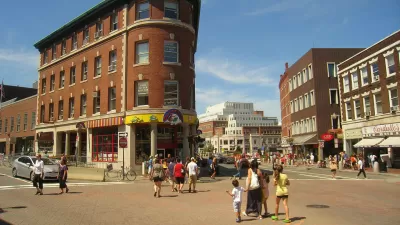
Census Data Shows Which Cities Encourage the Most Walking
Multiple metrics have been developed to measure which areas are the most friendly to pedestrians. But by looking at Census Data on commuting patterns, one can glean which city's residents are making the most of their "walkable" environs.
Summit Prescribes Walking as America's "Wonder Drug"
At America's first ever "Walking Summit", physicians, planners, developers, and community activists gathered to discuss how physical activity can help heal people and communities.
Walking to School on the Rise Across America
A new report from the National Center for Safe Routes to School finds that the percentage of students walking to and from school "increased significantly" between 2007 and 2012.
Transit, Biking and Walking are Big Winners in Pennsylvania Gas Tax Increase
Gas tax increases can mean more road funding, period, particularly where constitutional restrictions prohibit spending gas tax revenues on other modes, as exists in Pa.; yet all modes will benefit from the 28-cent gas tax increase legislation.
Mythbusting: Exposing Half-Truths That Support Automobile Dependency
Some commentators recently expressed outraged that governments spend money on cycling facilities. Their arguments are largely wrong, I’ll call them "half-truths" to be charitable, presented with great certitude and self-righteous anger.
This is Your Brain on Cars
Paul Salopek is embarking on a 21,000-mile, 7-year stroll around the world. After traversing 1,700 miles, his most profound insights focus on the impact of the century-old automotive revolution on our psyche - what he calls "Car Brain".
Low Crime Rates In Large Cities Support Multi-Modal Planning and Smart Growth
Contrary to popular assumptions, large, transit-oriented cities have lower crime rates than smaller, automobile-oriented cities. Jane Jacobs was right! This column discusses this phenomenon and its implications for transport and land use planning.
Mahatma Gandhi: Sustainable Transportation Visionary?
Mahatma Gandhi's utilization of non-violent civil disobedience to fight for civil rights is taught to school children around the world, but his views on the importance of biking and walking are less well known. Navdeep Asija investigates.
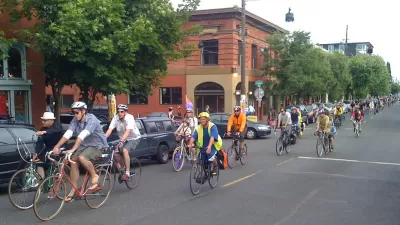
Will Portland Lose its Status as America's Bike Commuting Champion?
While bike commuting is gaining nationwide, it's actually dropping in Portland which has held the enviable title of tops in bike commuting for large cities since 2005. Minneapolis and Seattle, #2 and #3 respectively, are gaining, warns BikePortland.
Steel City Rolls and Strolls to a New Identity
In advance of their annual biking, walking, and placemaking conference, the Project for Public Spaces identifies five elements that the make Pittsburgh a unique destination for 'rolling and strolling'.
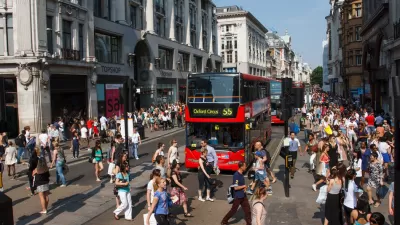
What's Driving London's Walking Boom?
London has always been a pedestrian-friendly city. But over the last decade the number of daily trips taken on foot in the city jumped by 12 percent, while walking declined nationwide. What explains the capital's pedestrian popularity?
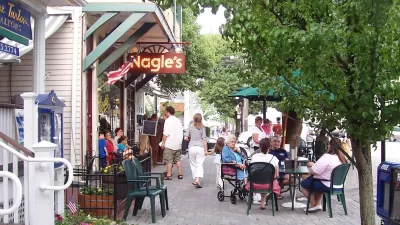
Why Don't We Allow Designers to Create Cites for People?
Cars kill us and drive us crazy; while walking and biking improve our mental and physical health. So why do we design our cities for cars, asks Jeffrey Tumlin.
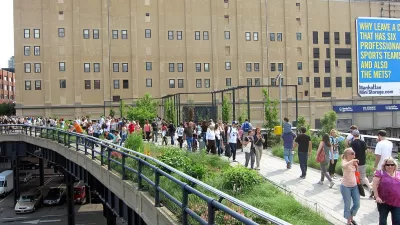
The High Line Highway
One of Manhattan's most popular tourist attractions, the linear, elevated urban park that existed as a freight rail line as late as 1980, is also a means of commuting to work - but only for walkers as cycling is prohibited along the High Line.
Slicing the Mobility Pie in Africa's Cities
The research wing of the non-profit think tank Future Cape Town has produced an infographic that provides valuable insight into the mobility patterns found in some of Africa's largest cities. Less sustainable options are growing, raising concerns.
Accounting for Latent Travel Demand
Planners must anticipate how people would respond to new options, such as better walking, cycling and public transit services. This requires imagination.
Pagination
Urban Design for Planners 1: Software Tools
This six-course series explores essential urban design concepts using open source software and equips planners with the tools they need to participate fully in the urban design process.
Planning for Universal Design
Learn the tools for implementing Universal Design in planning regulations.
planning NEXT
Appalachian Highlands Housing Partners
Gallatin County Department of Planning & Community Development
Mpact (founded as Rail~Volution)
City of Camden Redevelopment Agency
City of Astoria
City of Portland
City of Laramie


































